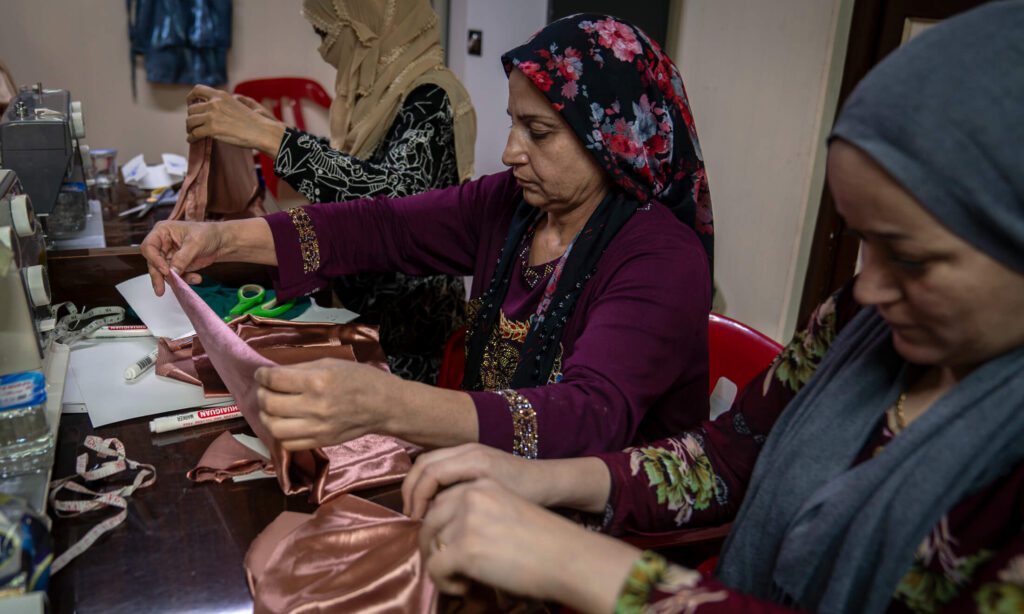“My husband and children couldn’t sleep at night because of the bombings,” says Suaad. The 45-year-old Syrian woman deftly threads her sewing machine as she tells the story of how she became a refugee.
Suaad and her family lived on the outskirts of Damascus when the Syrian civil war broke out in 2011. Their area became a battleground between government forces and armed militias, leaving Suaad and her family with no choice but to flee their home, leaving everything behind. She was pregnant at the time.
The family embarked on a difficult journey across Syria, from the southwest to the northeast corner of the country, where she gave birth in Hasakah. They then crossed the border into Iraq.
Ever since, they have lived in the Domiz 1 refugee camp, which was established in 2012 to house Syrian refugees temporarily and is now Iraq’s biggest refugee camp, accommodating nearly 29,000 people. With no end to the conflict in sight, its residents have no idea when—or if—they’ll ever return home.
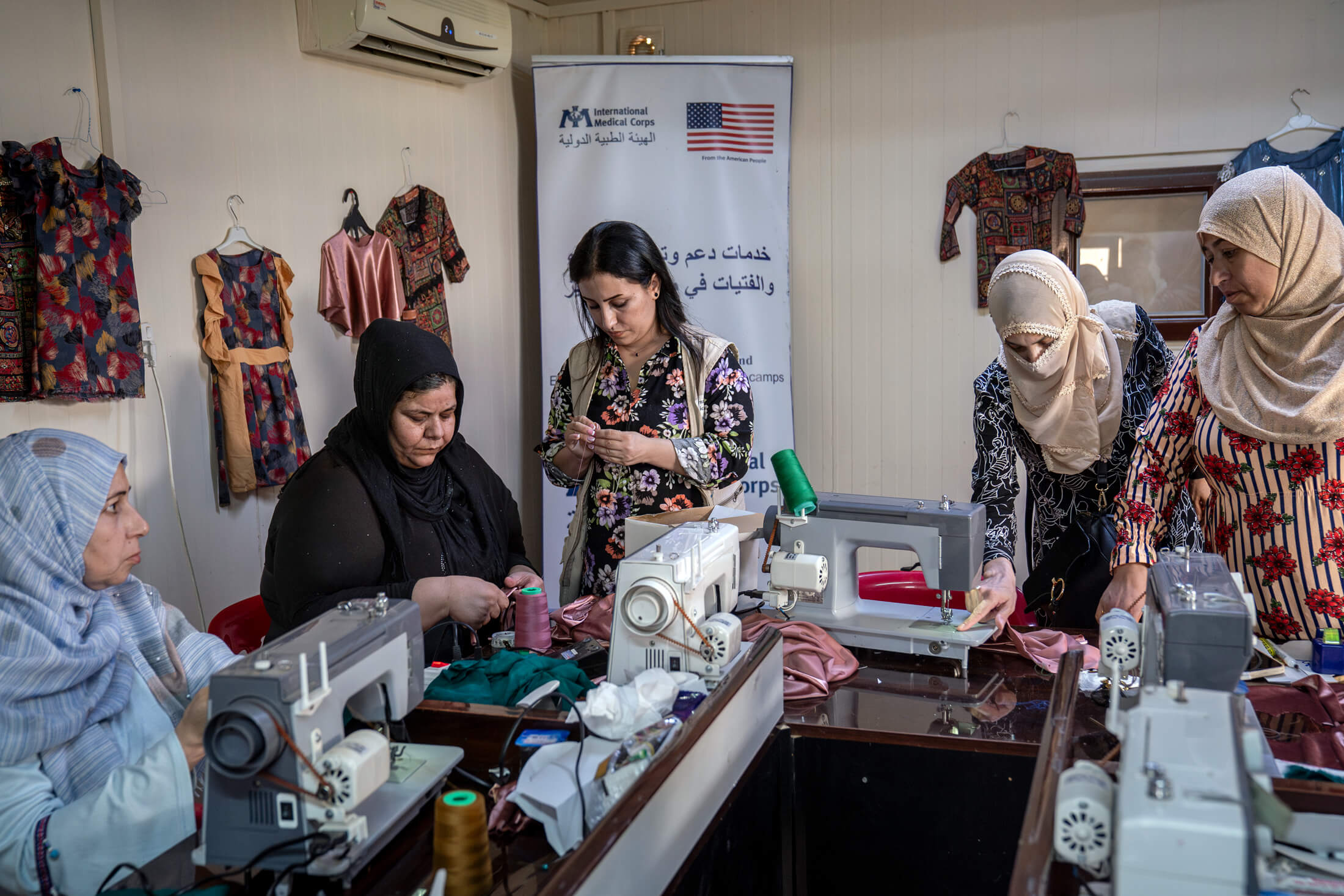
Life in the camp is difficult. Though the original tents have been replaced by solid structures, and the facilities and services in the camps have improved over time, the residents still struggle with a range of challenges, including poverty and a lack of economic opportunities.
“Our lives have been harder the last four years,” says Suaad. “At the start, there were a lot of job opportunities for our husbands and sons. My husband was a daily worker, building structures in the camp. He would work from 5 a.m. to 6 p.m., and made 10,000 Iraqi dinars a day [approximately $7.50].
“But there have been fewer opportunities in the last few years, so we’ve had to learn new skills to be able to support our families.”
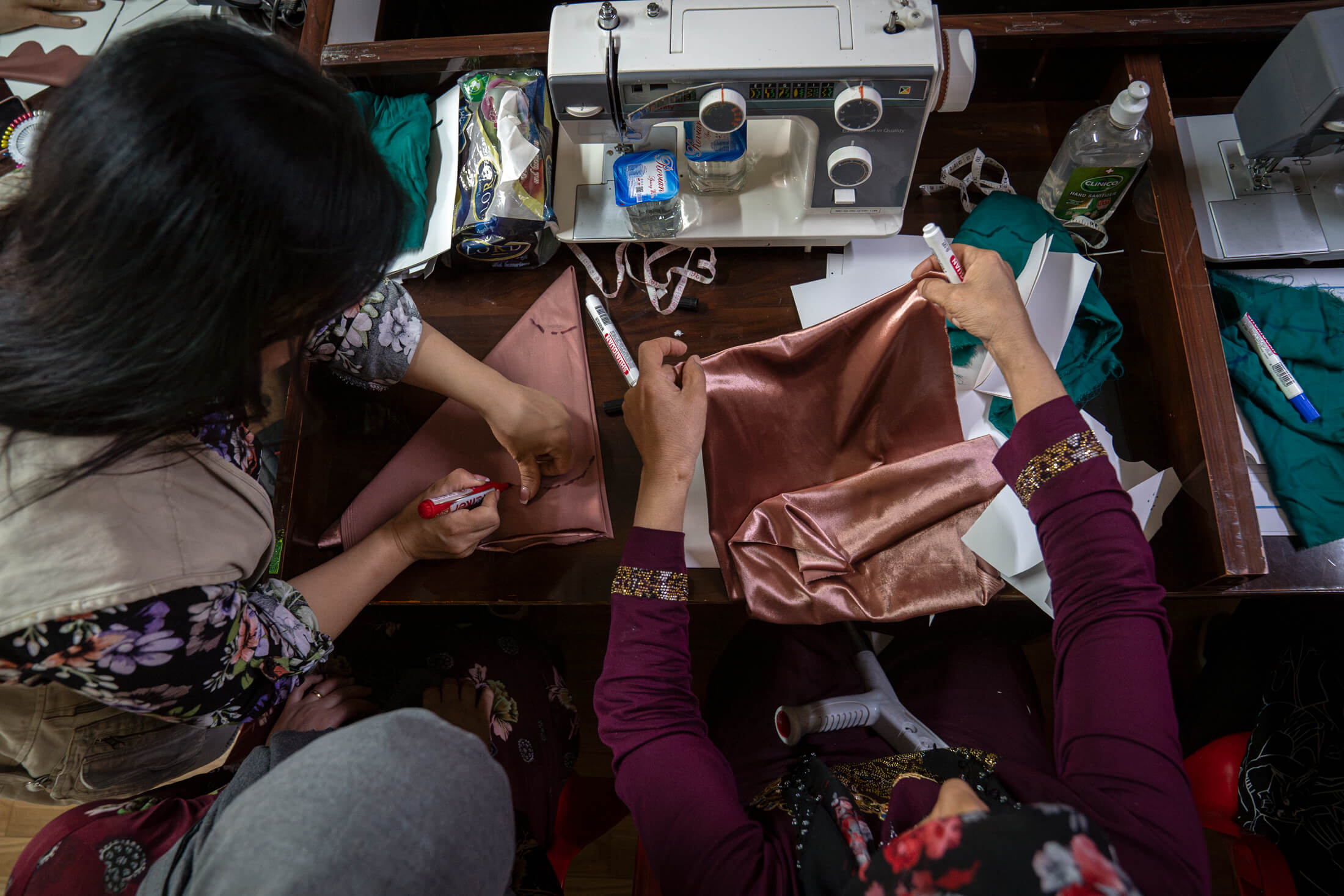
To support the women living in Domiz 1, International Medical Corps ran vocational courses such as sewing and tailoring lessons in the women’s and girls’ safe space. We also provided funding to help them start their own businesses.
“Improving their tailoring skills profoundly impacts the lives of women in refugee camps,” says Bahra Oshana, the Gender-Based Violence (GBV) Manager who helped facilitate the sessions in Domiz 1.
“It equips them with marketable skills and boosts their confidence and independence. Many of the women we train start their own small businesses, which help support their families and contribute to the local economy.”
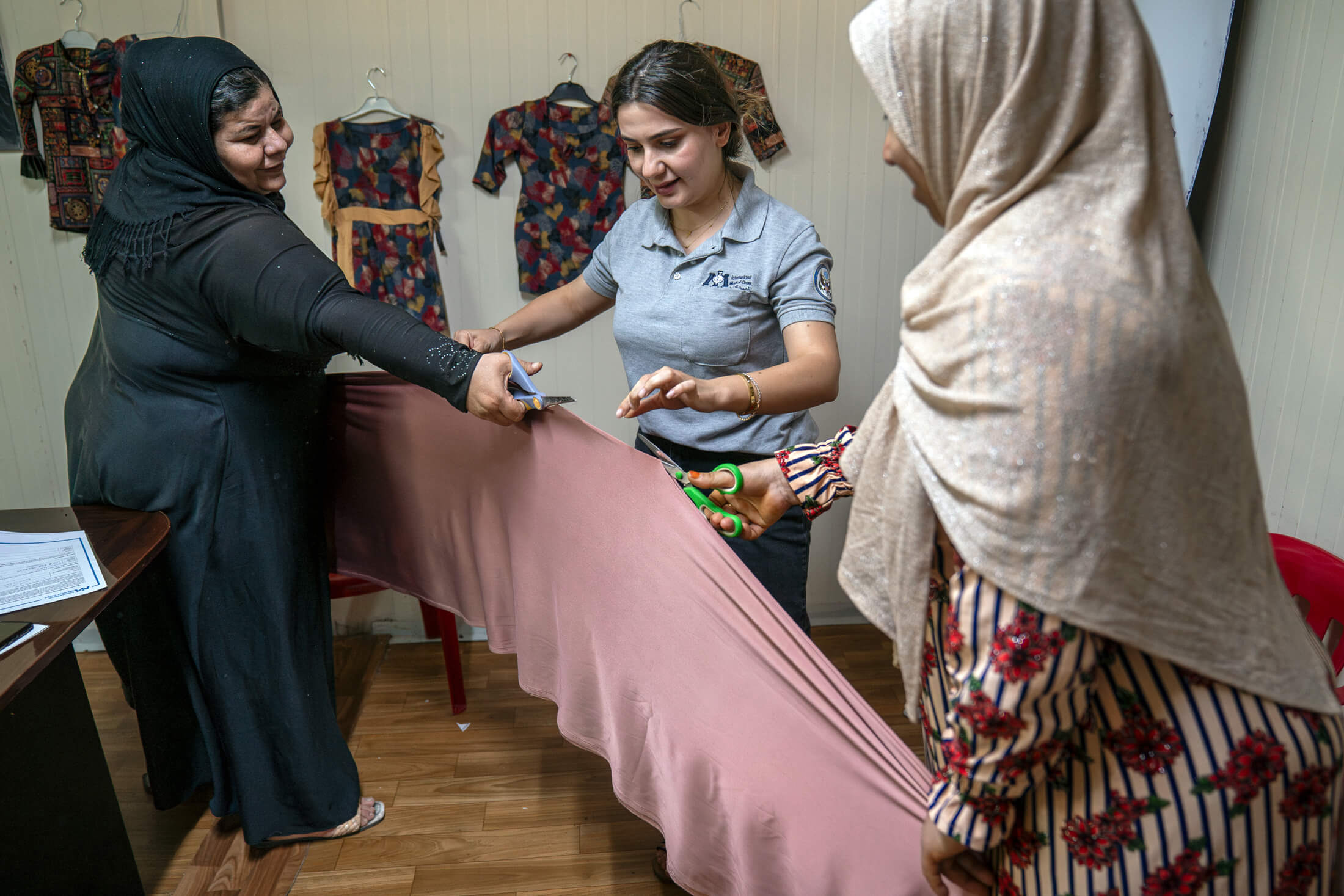
Suaad had never tailored clothes before, but she picked up the skill quickly during the course. It changed her life.
“I bought a small machine and have been using it in my house to do simple mending and alterations for neighbours, and I’m saving to upgrade my business,” she explains. “I can make a dress in one or two hours, and make more money than my husband, who worked all day!”
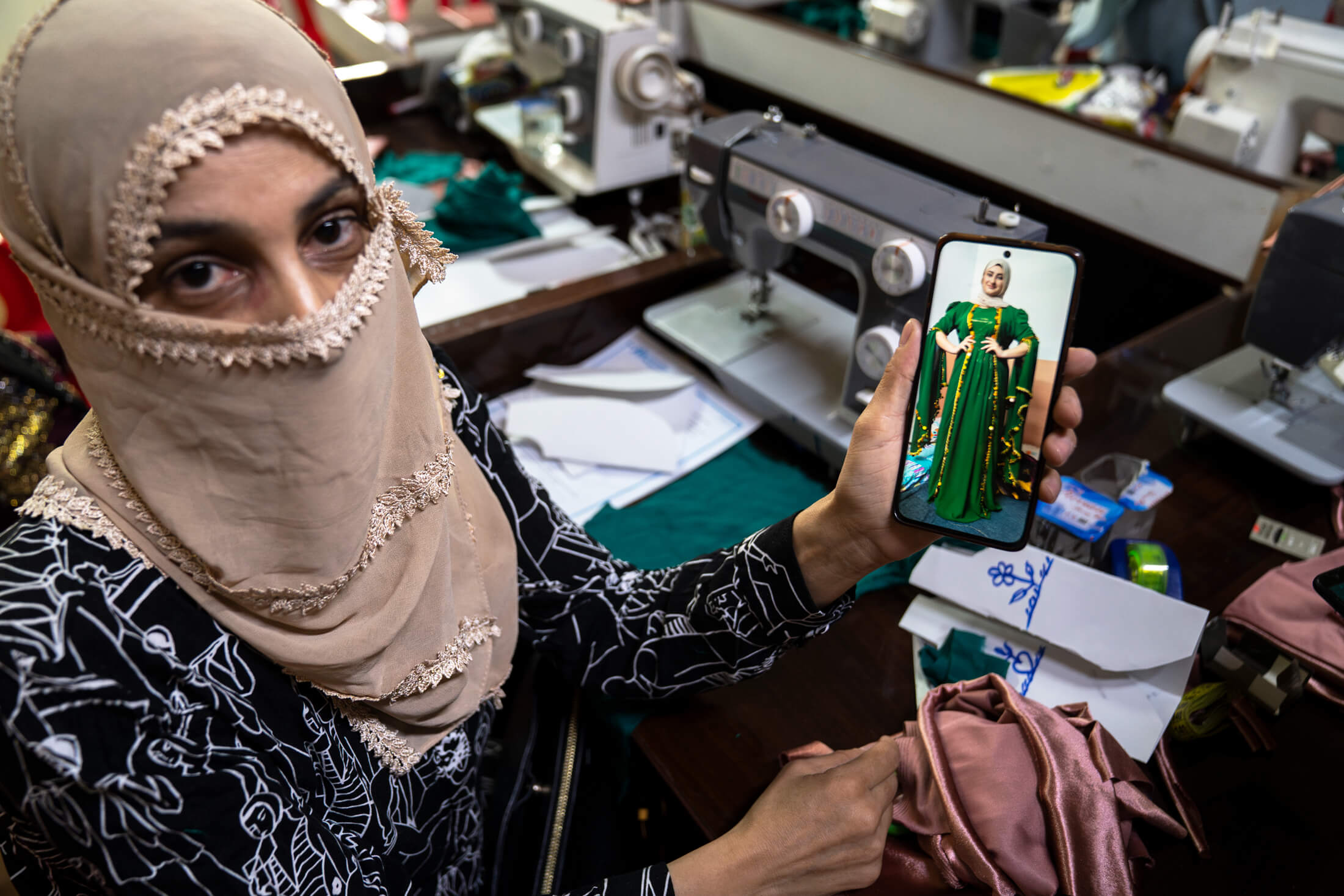
In addition to helping women in the camp gain the skills and independence to support their families, the training is a key part of International Medical Corps’ GBV prevention and response strategy. Displaced women are especially vulnerable to GBV, so we run similar vocational training sessions out of our women’s and girls’ safe spaces around the world, including in Jordan, Pakistan and South Sudan.
“The classes are an environment where women can openly discuss their experiences and access GBV resources if needed,” Bahra says. While working on their projects, she explains, the women feel more comfortable speaking about topics that might otherwise be taboo or difficult to discuss—and staff like Bahra are on hand to provide support.
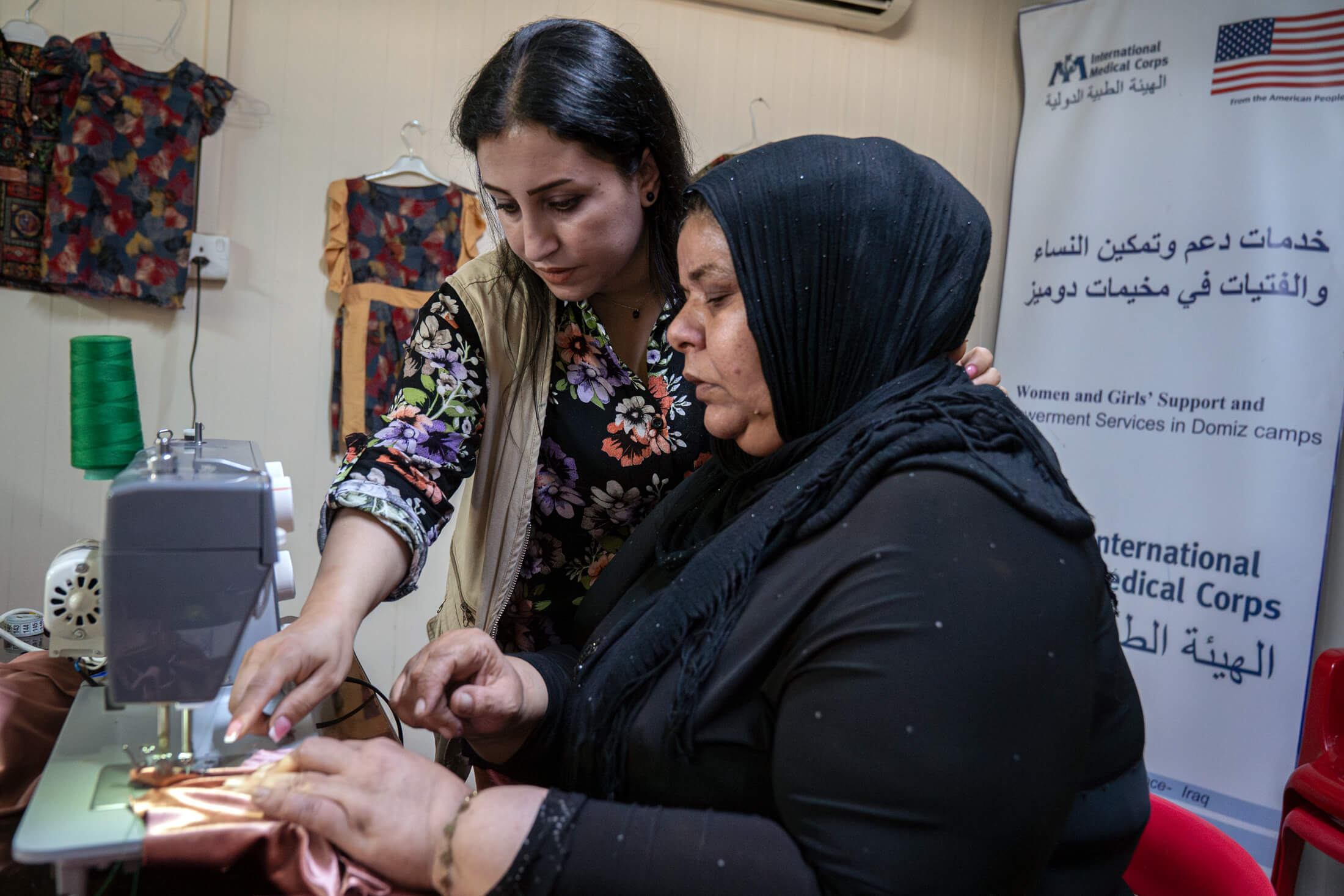
Even if the women don’t use their new skills to make money, the positive social and emotional impact of the training cannot be understated.
“These training sessions provide a safe space for women to connect, share experiences and support each other, which is invaluable for their mental and emotional well-being,” says Bahra.
“We’re aiding in the overall recovery and resilience of these people, who have experienced immense trauma. It’s all about fostering a sense of community and purpose.”
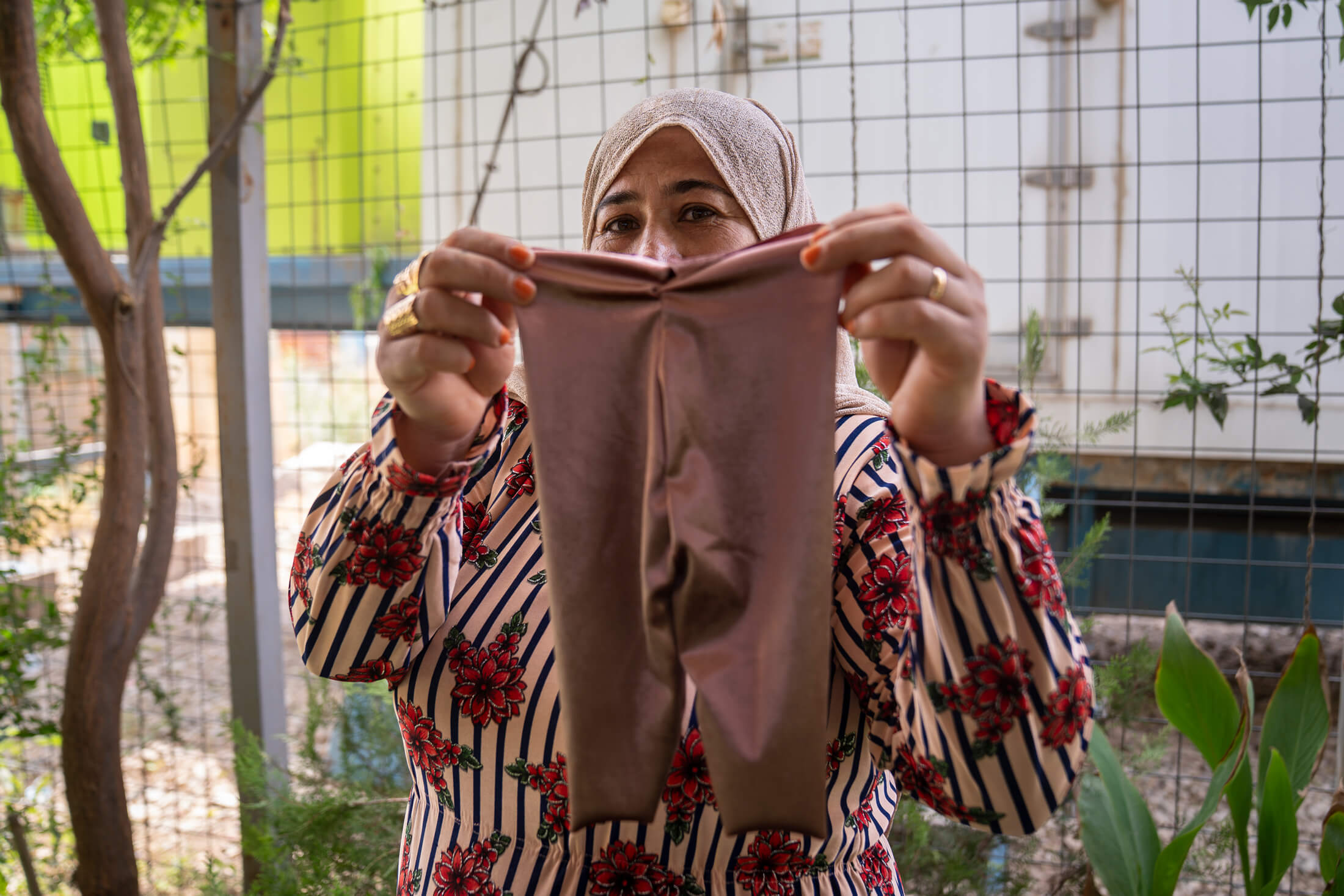
To help us continue supporting people affected by disaster, disease and conflict around the world, donate to International Medical Corps today.
